What is a Tarantula Hawk?
The tarantula hawk (Pepsis grossa) is a species of large, powerful spider wasp that preys on tarantulas. These wasps are known for their formidable size, their excruciatingly painful sting (ranked among the most painful insect stings), and their unique reproductive behavior. They are solitary wasps, meaning they do not live in colonies like bees or ants, and they are found in various parts of the world, particularly in the Americas. Their life cycle is intricately linked to tarantulas, making them fascinating subjects of study for entomologists and nature enthusiasts alike. The name itself suggests the wasp’s primary prey, highlighting a predator-prey relationship that is both dramatic and essential for the ecosystem.
Appearance and Characteristics
Tarantula hawks are visually striking insects. They have a robust build and are typically characterized by their striking coloration. Most commonly, they exhibit a deep blue-black body with bright, rusty orange wings. This combination of colors serves as a warning signal to potential predators, advertising their potent sting. The wasps are also quite large, with females being bigger than males. Their size, combined with their powerful legs and mandibles, allows them to overpower and transport tarantulas. The overall appearance of the tarantula hawk is both intimidating and beautiful, a testament to the power and complexity of the natural world.
Size and Features

Female tarantula hawks can reach up to 5 centimeters (2 inches) in length, making them one of the largest wasps in the world. Males are generally smaller. Their physical features are adapted for their predatory lifestyle. They have strong legs and sharp claws used for gripping and carrying their prey. Their antennae are used for sensing and navigating. Their wings are designed for powerful flight, enabling them to hunt and patrol their territory efficiently. These features highlight the evolutionary adaptations that have made them successful predators within their specific ecological niche. The contrast between their delicate wings and powerful legs is a striking example of nature’s ingenuity.
Habitat and Distribution
Tarantula hawks are predominantly found in the Americas. Their habitat ranges from deserts and scrublands to tropical rainforests, with a particular affinity for arid and semi-arid environments where tarantulas are abundant. They are most commonly seen in the southwestern United States, Mexico, and parts of South America. The specific habitats vary depending on the species and subspecies of tarantula hawk, but they generally prefer warm climates. These wasps are highly adaptable, and their distribution often mirrors that of their primary prey. Therefore, understanding the tarantula hawk’s distribution provides insight into tarantula populations and the broader health of the ecosystems they inhabit.
Where to Find Them
Spotting a tarantula hawk can be a thrilling experience for nature enthusiasts. They are often seen flying low to the ground, searching for tarantulas. The best time to see them is during the warm months, when they are most active. You might find them near burrows or in areas where tarantulas are known to reside. When observing these wasps, it’s important to maintain a safe distance due to their potent sting. They can also be attracted to flowering plants, as they feed on nectar. Careful observation in the right habitats can significantly increase the chances of seeing one of these remarkable insects.
Diet and Hunting
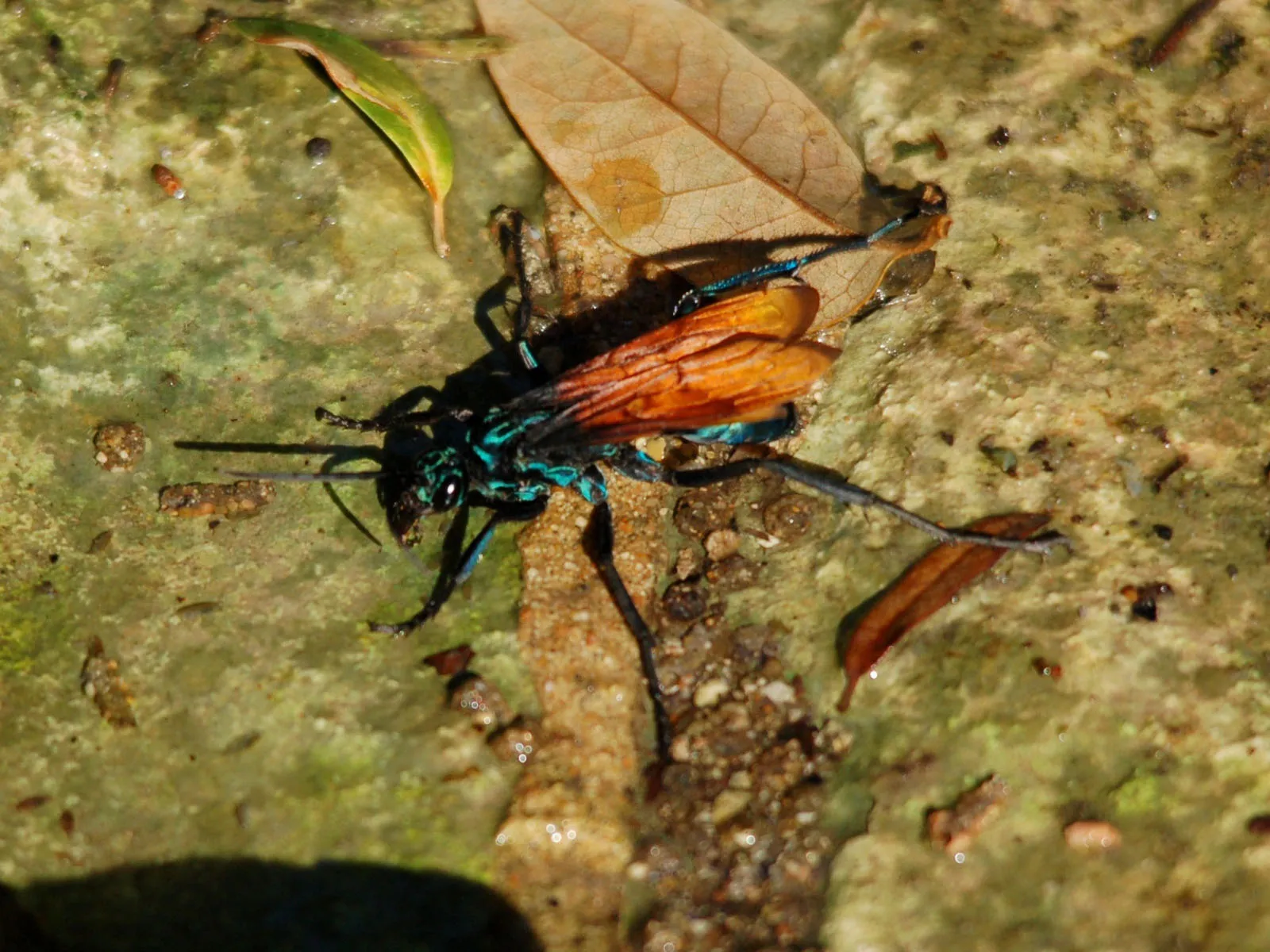
The primary diet of tarantula hawks is nectar from flowers, but their hunting behavior sets them apart. They are highly specialized predators, focusing almost exclusively on tarantulas. The hunting process is a dramatic display of predator-prey interaction. The female tarantula hawk seeks out a tarantula, either by detecting it in its burrow or by actively searching in the open. The wasp then engages the tarantula in a battle, using its sting to paralyze the spider. This paralyzing sting is the key to the tarantula hawk’s survival, allowing it to transport its much larger prey to a suitable nest. This intricate hunting strategy illustrates the specialized adaptations that have enabled these wasps to thrive.
Prey and Hunting Techniques
The tarantula hawk’s hunting technique is both fascinating and brutal. Once a tarantula is located, the wasp carefully approaches, often circling and sizing up its target. The female then uses her stinger to inject venom, paralyzing the tarantula. The sting is delivered in a way that immobilizes the spider without killing it. The wasp then drags the paralyzed spider, sometimes over long distances, to a burrow or nest. The wasp’s size and strength are crucial for this transportation. The entire process is a remarkable display of hunting prowess, a testament to the survival strategies in the animal kingdom. The hunting techniques also highlight the level of precision and adaptation found in the natural world.
The Sting and Its Effects
The sting of a tarantula hawk is infamous for its intensity. It is ranked among the most painful insect stings in the world. The venom primarily serves to paralyze the tarantula, but it also causes intense, localized pain. While the sting itself is not usually life-threatening to humans, the pain can be excruciating. Those who have been stung describe the sensation as a searing, electrical shock, often accompanied by a feeling of immense burning. The effects of the sting are temporary, but the pain can be incredibly severe, making encounters with these wasps a memorable experience, though one best avoided. Their sting acts as a formidable defense mechanism and is a key component of their hunting strategy.
Pain Level and Duration
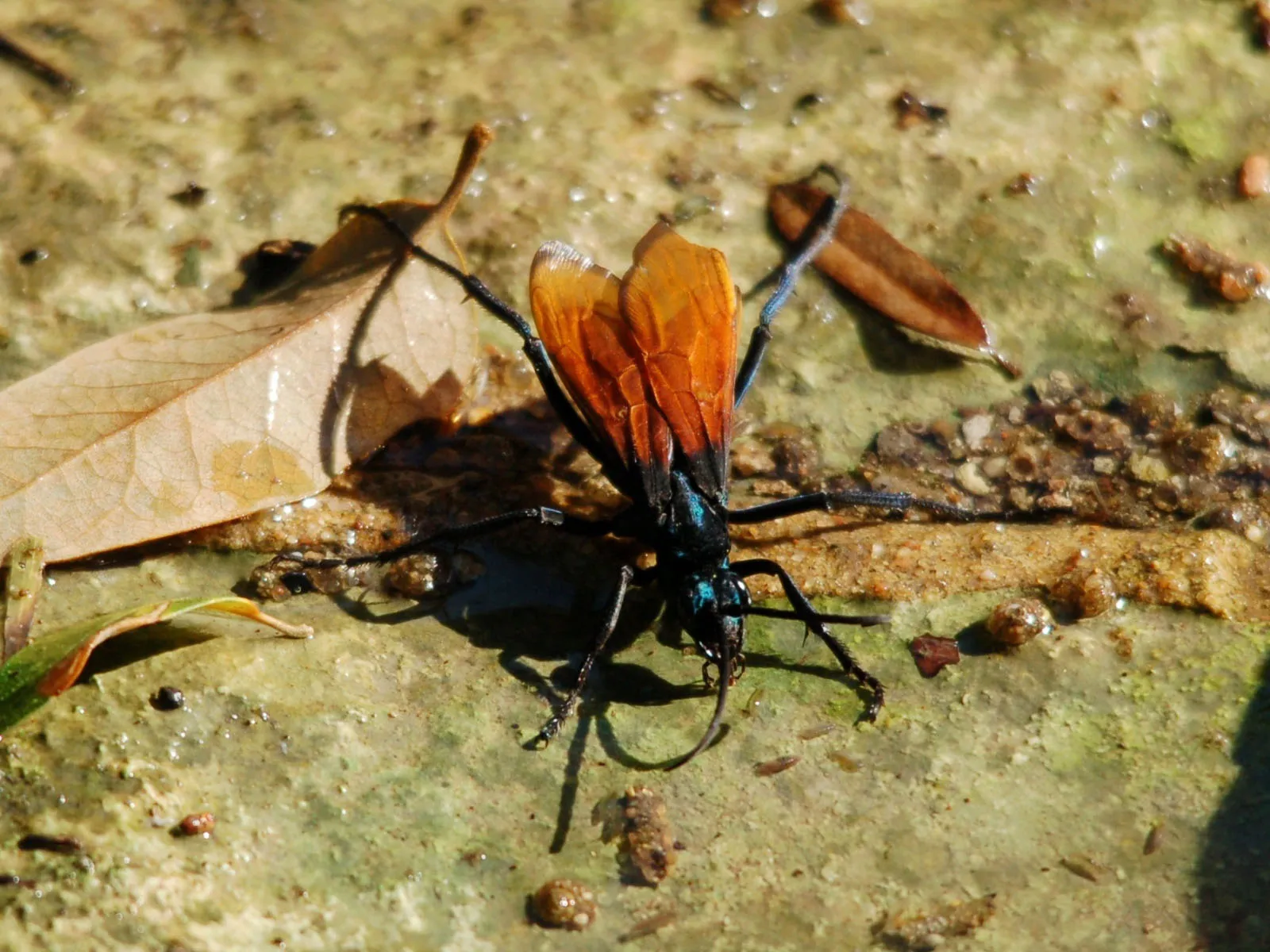
The pain from a tarantula hawk sting is often described as incapacitating. The pain is immediate and can last for several minutes, sometimes even hours. While the pain subsides over time, the initial impact is intense. The sensation has been compared to being electrocuted or being burned. There are several pain scales used to measure the intensity of insect stings, and the tarantula hawk often ranks near the top. The duration varies, but the initial pain is usually the most severe. Medical treatment is rarely needed unless there is an allergic reaction to the sting, but rest and avoiding further provocation of the affected area are recommended.
Life Cycle and Reproduction
The life cycle of a tarantula hawk is intricately linked to its prey. After paralyzing a tarantula, the female drags it to a burrow or creates a nest in the ground. She then lays a single egg on the paralyzed spider’s abdomen. The wasp larva hatches from the egg and begins to feed on the paralyzed tarantula, essentially eating it alive. The larva grows and molts several times, eventually pupating inside the spider’s body. This unique reproductive strategy ensures that the larva has a readily available food source. The entire process takes several weeks, from egg to adult wasp. This complete metamorphosis highlights the remarkable lifecycle of the species.
Mating and Nesting
The mating behavior of tarantula hawks typically involves males searching for females. Once a female is found, mating occurs. After mating, the female begins the process of finding and paralyzing a tarantula. She then constructs a nest or utilizes an existing burrow to place her prey. The wasp larva’s development inside the tarantula’s body is the nesting stage. The female wasp meticulously prepares the nest, often dragging the paralyzed tarantula to a protected location. The nesting behavior is driven by instinct, with the wasp carefully ensuring that the developing larva has a safe environment and sufficient food. This process exemplifies the intricate behaviors that allow these species to propagate.
Conservation Status and Threats
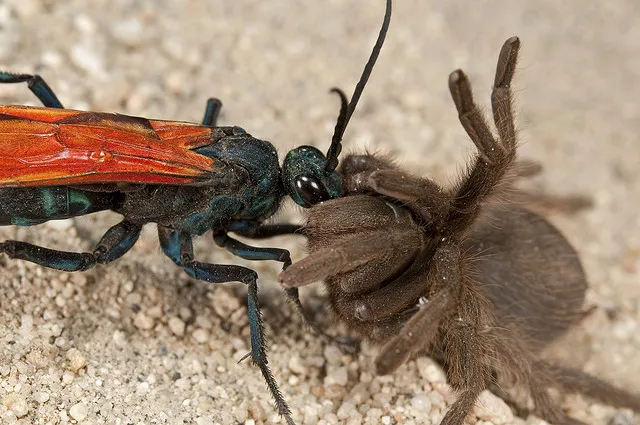
The tarantula hawk is not currently listed as an endangered species. Their populations are generally considered stable across their range. However, they are vulnerable to threats such as habitat loss and pesticide use, which can impact their prey, the tarantulas, and the ecosystem they depend on. Climate change could also pose a threat by altering their habitats. Conservation efforts mainly focus on preserving their habitats and promoting responsible land management practices. Understanding the long-term threats these wasps face is crucial to ensuring their survival and the health of their ecosystems.
Are They Endangered?
Currently, tarantula hawks are not classified as endangered. They are relatively common in many areas of the Americas. However, localized populations may be impacted by habitat destruction or overuse of pesticides. Ongoing monitoring and research are necessary to assess any potential changes in population levels. Their conservation status could change in the future, especially if their habitats continue to be threatened. Public awareness and the promotion of sustainable practices are vital for maintaining their populations and ensuring that these fascinating insects continue to thrive.
Interesting Facts
Tarantula hawks are full of fascinating facts. They are a great example of how diverse the insects are. From their incredibly painful sting to their meticulous hunting techniques, these wasps are a marvel of evolution. Here are five surprising facts about them.
Fact 1
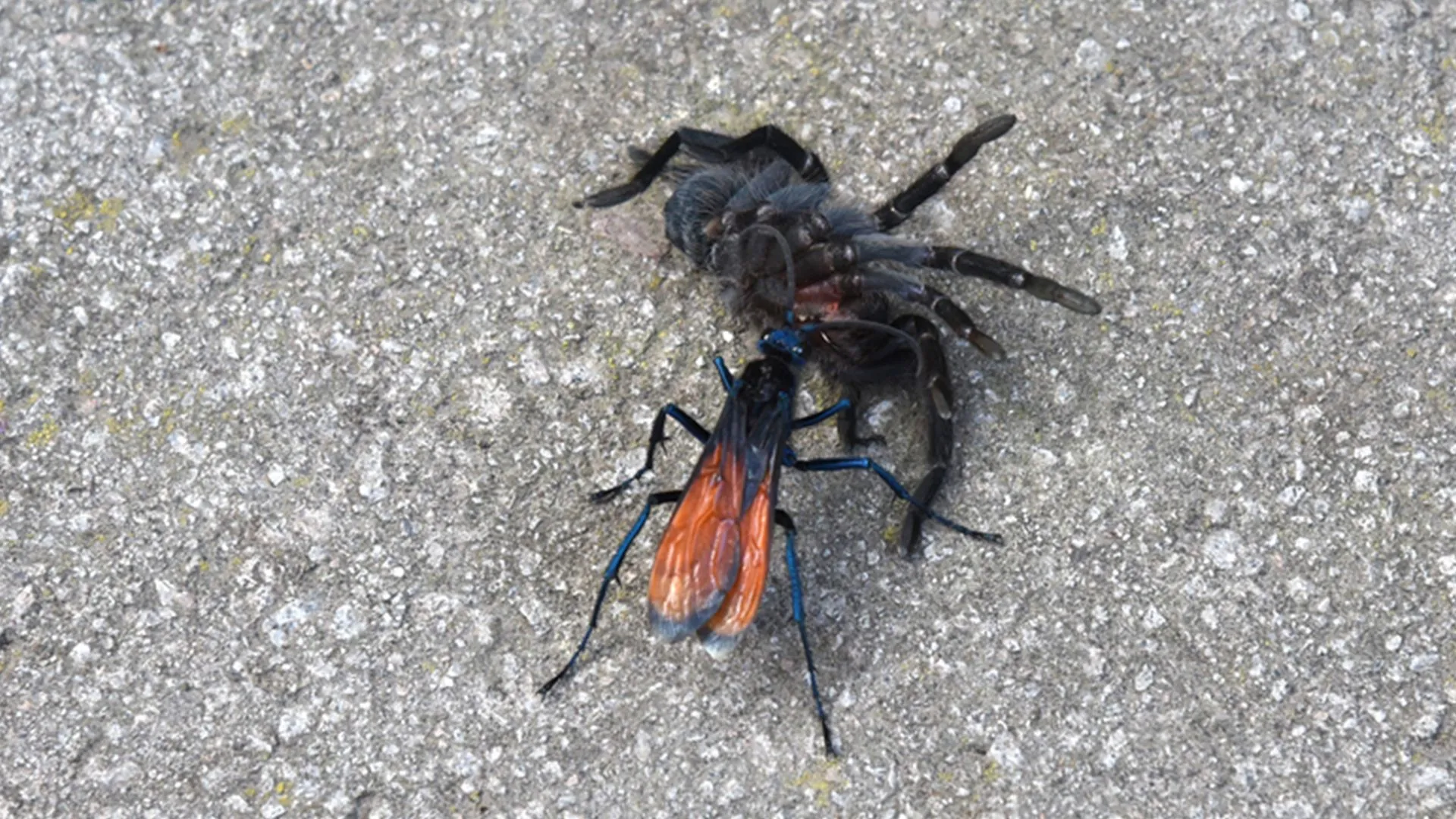
The sting of a tarantula hawk is one of the most painful stings in the world, but it’s not usually fatal to humans. However, the pain can be so intense it’s been described as feeling like being electrocuted. Their sting is primarily designed to paralyze the tarantula.
Fact 2
Tarantula hawks don’t just prey on tarantulas. They will sometimes hunt other large spiders, though they are highly specialized in their predation of tarantulas. The choice of prey primarily depends on their habitat and the availability of different spider species.
Fact 3
The female tarantula hawk is much larger than the male. This size difference is due to their distinct roles. Females need to be larger and stronger to transport the tarantulas, while males are primarily focused on mating.
Fact 4
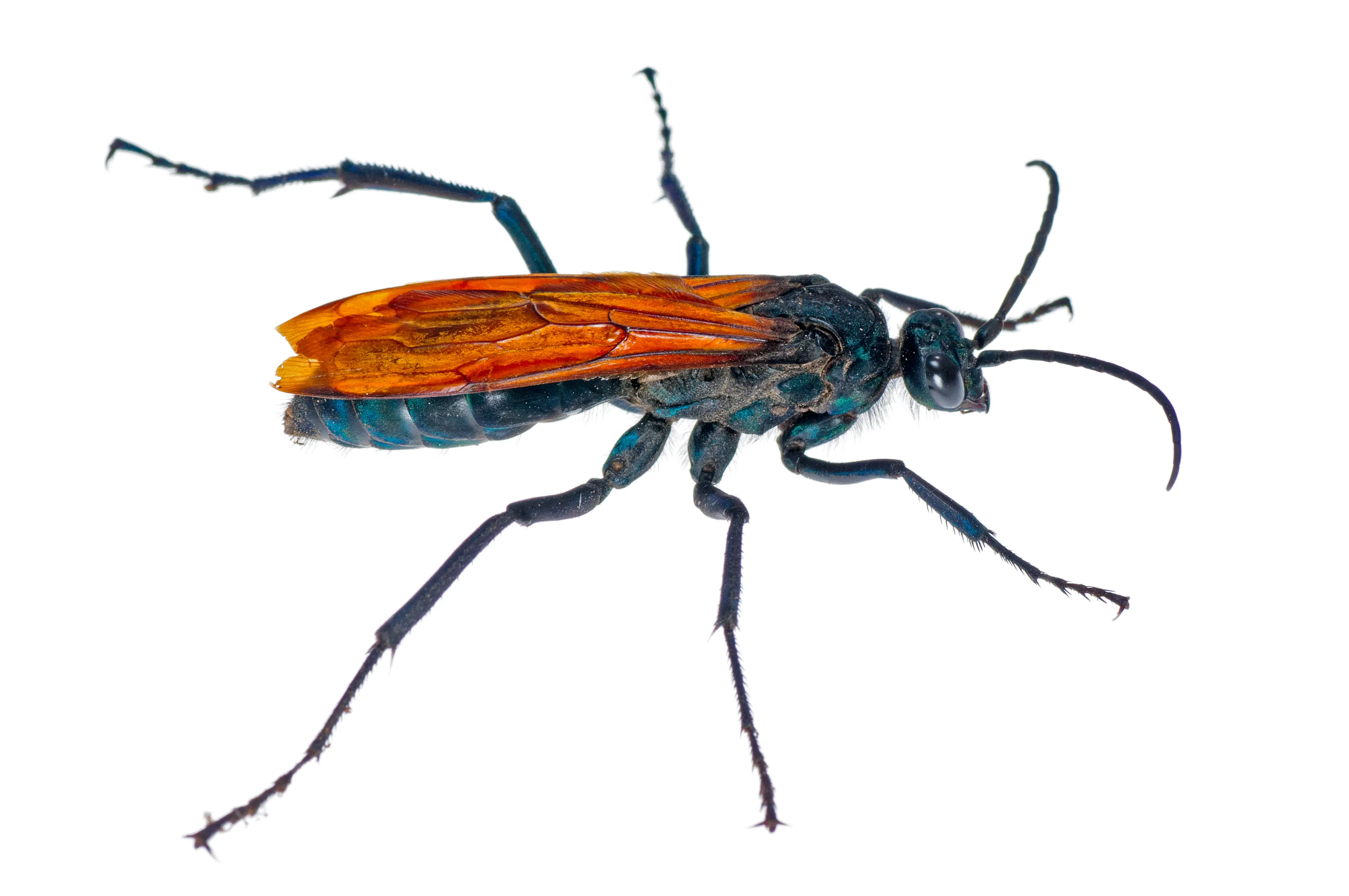
Tarantula hawks are solitary wasps, meaning they live alone and don’t form colonies like honeybees or ants. Each female is responsible for hunting, nesting, and raising her offspring.
Fact 5
The wasp’s life cycle is wholly dependent on the tarantula. The female wasp lays her eggs on the paralyzed tarantula. When the eggs hatch, the larva consumes the tarantula from the inside out, providing a complete food source.
Conclusion
The tarantula hawk is a fascinating insect that offers a glimpse into the amazing diversity of the natural world. Their unique adaptations, dramatic hunting techniques, and the intensity of their sting make them a subject of both awe and caution. Learning about these wasps provides a greater understanding of the complex relationships within ecosystems. As we continue to explore and study these amazing creatures, we gain a deeper appreciation for the delicate balance of nature and the need for conservation.
